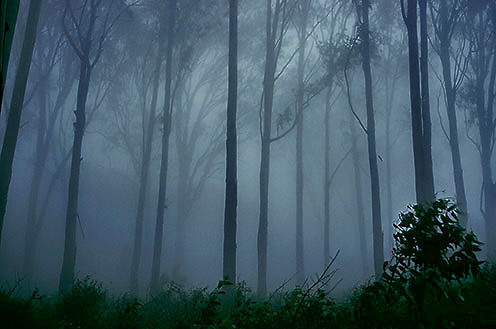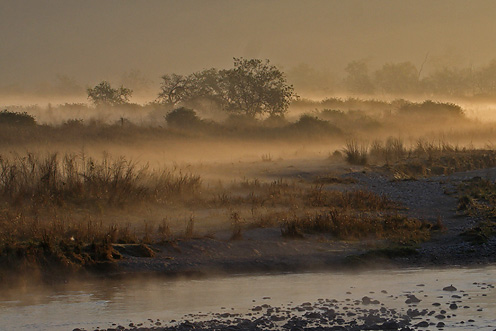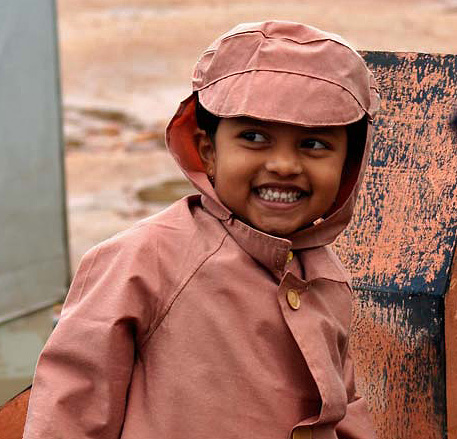Monsoons have just hit the southern parts of the country. Let’s look at ways to make best use of the cloudy and rainy days in this week’s Travel Photography column.
As always, the second part of this article has weekly image reviews. If you would like to have your images reviewed to know what worked well and how it could have been improved, choose some of your best images and post them on group pool of India Travel and Photography. Don’t forget to tag them as itpcritique, so they can be chosen for review. You can also post your questions related to photography as a comment to this post, or in India Travel and Photography group discussion. I will answer them in next week’s article.
PHOTOGRAPHING MONSOONS
In my first few years of taking up photography seriously, monsoon season was the time to pack the camera and store it in the closet. The sky would be overcast through the season. It rained on and off, and I was at loss in thinking of opportunities for photography. At the end of the season when the rains subsided, I would invariably end up with fungus growing merrily in the unattended lenses. But over the next few years, I saw the joy in photographing even in rainy days. Here are some of my observations on getting the best from the camera in the wet season.
1. Keep the sky out
Overcast sky is not a great subject. More often than not the sky gets burnt and the details are lost. If that doesn’t happen, colours in rest of the image tend to appear dull. It is hard to get good exposure and quality images when sky becomes a part of the image in bad weather. Just keep the sky out of the frame and look for opportunities on the ground. This is the season when everything looks lush, alive and beautiful. Lookout for the smaller, interesting subjects than focusing on the grand landscapes. On a wet day, you will notice that the colours are rich and beautiful, and even mundane things can look pretty.
The image below is an example of how rich the colours can it get. The picture was taken on a day when it rained on and off and remained foggy through the day. You can see the fog behind the trees in the picture.

2. Capture the flow of water
This is the ideal time to photograph waterfalls and streams. Just head to the nearest forest and walk along a stream in search of your opportunities. Good pictures are not hard to come by if you are willing to spend a lot of time working on the compositions. It helps to carry a tripod to give a frozen look to the waterfalls (more about it in later chapters).

3. Walk into the fog
It took me a few years to realize that fog offers some great opportunities for photography. At a closer range, fog can be cleverly used to create some interesting images of shapes. Often it is the outline that matters in such weather, not the details. Get into a wooded place and look for interesting shapes and structures. See the example below.

Sometimes, low lying fog can help make the landscape look surreal in the morning hours. Make sure you are up early in the morning and waiting at a vantage point to see (and photograph) such a beauty.

4. Look at people
This is not an area that I have spent time working on, but I have seen some beautiful images of celebrating the rains. Opportunities are many, like people looking up to the sky, wind harassing the umbrellas, little kids walking to school in raincoats,.. Life offers unlimited opportunities. Personally, I have found it difficult to capture people in the rains. Do you have any tips and experiences? Do share them in the comments section.

IMAGE REVIEWS
The image below is posted for review by flickr user JHarris2009

The moment is just right, and the timing of this photograph is perfect. The gentle bluish light around the performers on the floor works well. The picture is exposed properly, despite the possibility of getting an overexposed image in the dark background. One problem area I see is the shadows on the man’s face, especially on the eyes. Also, it looks like the image was shot from a side. It could have been bettered by shooting from a position in line with the performers.
If you would like to have your images reviewed to know what worked well and how it could have been improved, choose some of your best images, post them on group pool of India Travel and Photography and tag them as itpcritique. Only tagged images are taken for reviewing. You can also post your questions related to photography as a comment to this post or in India Travel and Photography group discussion. I will answer them in next week’s article.
Here is the list of posts from ‘The complete guide to Leh – Manali Road’
A short drive from Pang are Morey plains – a vast, perfectly flat plateau bordered by low hills. Like the plains of Sarchu, it is another unlikely break from climbing up and down the mountains, maneuvering tight curves and wading through clear streams. Cab drivers seem to look up to being there, and step on the gas and raise dust storms as soon as they enter the plateau. It is so flat that no one cares to stick to the road, but steer at will and make their own way.
In fact there isn’t a proper metaled road for most of the way across the plain. BRO works hard to maintain roads in the tough terrains all along the highway, but here on Morey plains where it seems easier to metal the surface, it is left unattended. The wheels of the vehicles randomly cruising on the plains trample the tiny grass that springs here and prevents any growth along a wide strip. Besides the environmental problem, it affects supply of grass to Khampa people – a nomadic shepherd community living in these parts.
The road begins the climb up to Tanglang la after more than an hour of trampling through Morey plains. Tanglang la (altitude – 5328 meters or 17,582 feet) is the second highest motorable pass in the world and the highest point on the road, after which the final descent to Indus Valley begins.
By the time we got past the plains, sun was already going behind the mountains and the last rays were falling on the peaks. Weather turned hostile as we climbed up and it started raining slowly. Rain turned into a mix of snow and water as we gained altitude. There were fresh deposits of snow along the road, indicating that it has been coming down for a while. The unmetaled road at the higher reaches was slushy and our cab driver was struggling to navigate on the muddy road. I saw an Enfield parked and orphaned on the way, probably left behind by someone who was finding it hard to ride in the tough weather and slushy road.
Tangang la seems to get hit by bad weather fairly often – I have had at least three people telling me about encountering bad weather when they crossed the pass during various months of the tourist season.
As we climbed up to the pass, I recognized faint signs of altitude sickness in me for the first time on the road. We had stopped somewhere close to the top and had to wait for a bunch of trucks to get across each other in the slushy and narrow road. I felt mild headache and nausea and wondered if it meant anything. It could have been the altitude, or it could be because of half burnt diesel fumes emitted by the trucks ahead of us. The windows were all closed to prevent rain and the chill from coming inside, which could have added to the problem. Whatever be the reason, the trouble did not last more than ten minutes and I did not have to worry much.
Weather was much better on the other side of the pass. The last rays of sun were falling on the peaks that glowed in the golden light. We had become a part of these mountains here, passing right in the middle of them and looking at neighbouing peaks from an equal altitude. Clouds, unable to climb any higher, had rested gently on the mountain slopes below us. It was a sight to behold.
The descent from the pass is steady and long, loosing altitude all the way till Leh. Light faded as we descended and deprived us of the views of the valley, but I got a chance to come back on the same route again a month later and see the unusual colours of the mountain slopes in these parts.
The road widens and the landscape becomes a lot more friendly as we descend to the first villages on the Indus Valley. Rumtse is the first peopled place, after which small settlements start appearing once in a while. The mountains here have deep chocolate brown to reddish shades. Sharp, jagged ridges and sawtooth like peaks unseen earlier keep the traveller from getting jaded from the long journey. It is more nearly 18 hours from Manali before arriving at the banks of Indus River in Upshi Village. It still an hour and a half to go before reaching Leh.
The journey ahead to Leh is easy and monotonous. The landscape is friendly, relatively green as the road goes along the Indus River. Villages appear regularly on the way now. Our cab driver zipped through the wide two-lane road all the way to Leh. For someone who is still romanticizing that Leh would be like a discovery of a place out-of-nowhere with just some scattered habitation here and there, it is a disappointment. Bulk of Ladakh lives in the Indus Valley, and can well be called crowded compared to rest of Ladakh. Leh itself has a suburban sprawl with dense spread of shops lining up in an ugly way like any small town on the plains.
Starting from Keylong, it is a long and tiring 15 hours on the road for us, but others on the cab have spent 20 hours sitting cramped in the Sumo. Yet, there is the excitement of having arrived at the place that fascinated me for many years.





